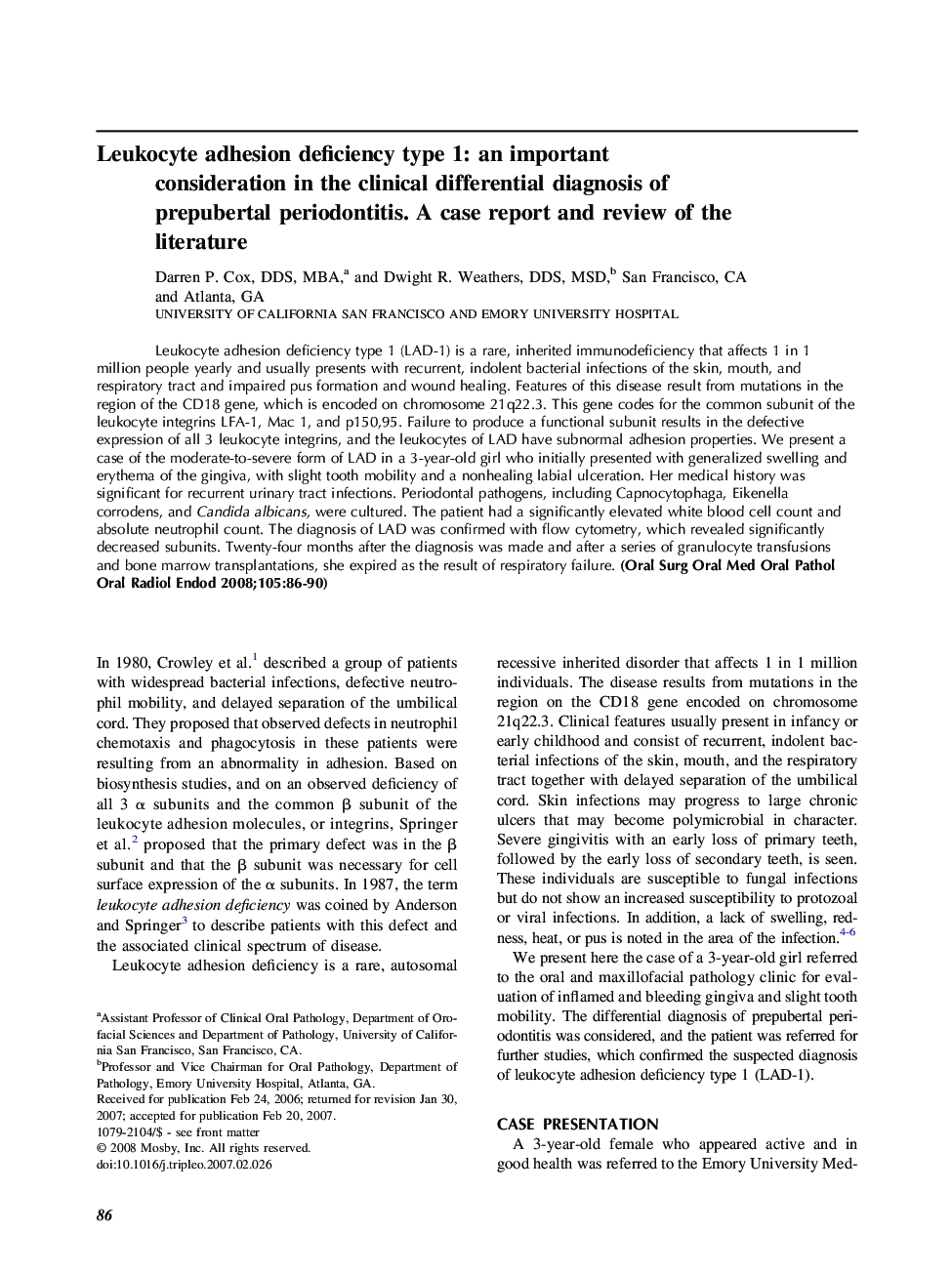| Article ID | Journal | Published Year | Pages | File Type |
|---|---|---|---|---|
| 3168989 | Oral Surgery, Oral Medicine, Oral Pathology, Oral Radiology, and Endodontology | 2008 | 5 Pages |
Leukocyte adhesion deficiency type 1 (LAD-1) is a rare, inherited immunodeficiency that affects 1 in 1 million people yearly and usually presents with recurrent, indolent bacterial infections of the skin, mouth, and respiratory tract and impaired pus formation and wound healing. Features of this disease result from mutations in the region of the CD18 gene, which is encoded on chromosome 21q22.3. This gene codes for the common subunit of the leukocyte integrins LFA-1, Mac 1, and p150,95. Failure to produce a functional subunit results in the defective expression of all 3 leukocyte integrins, and the leukocytes of LAD have subnormal adhesion properties. We present a case of the moderate-to-severe form of LAD in a 3-year-old girl who initially presented with generalized swelling and erythema of the gingiva, with slight tooth mobility and a nonhealing labial ulceration. Her medical history was significant for recurrent urinary tract infections. Periodontal pathogens, including Capnocytophaga, Eikenella corrodens, and Candida albicans, were cultured. The patient had a significantly elevated white blood cell count and absolute neutrophil count. The diagnosis of LAD was confirmed with flow cytometry, which revealed significantly decreased subunits. Twenty-four months after the diagnosis was made and after a series of granulocyte transfusions and bone marrow transplantations, she expired as the result of respiratory failure.
